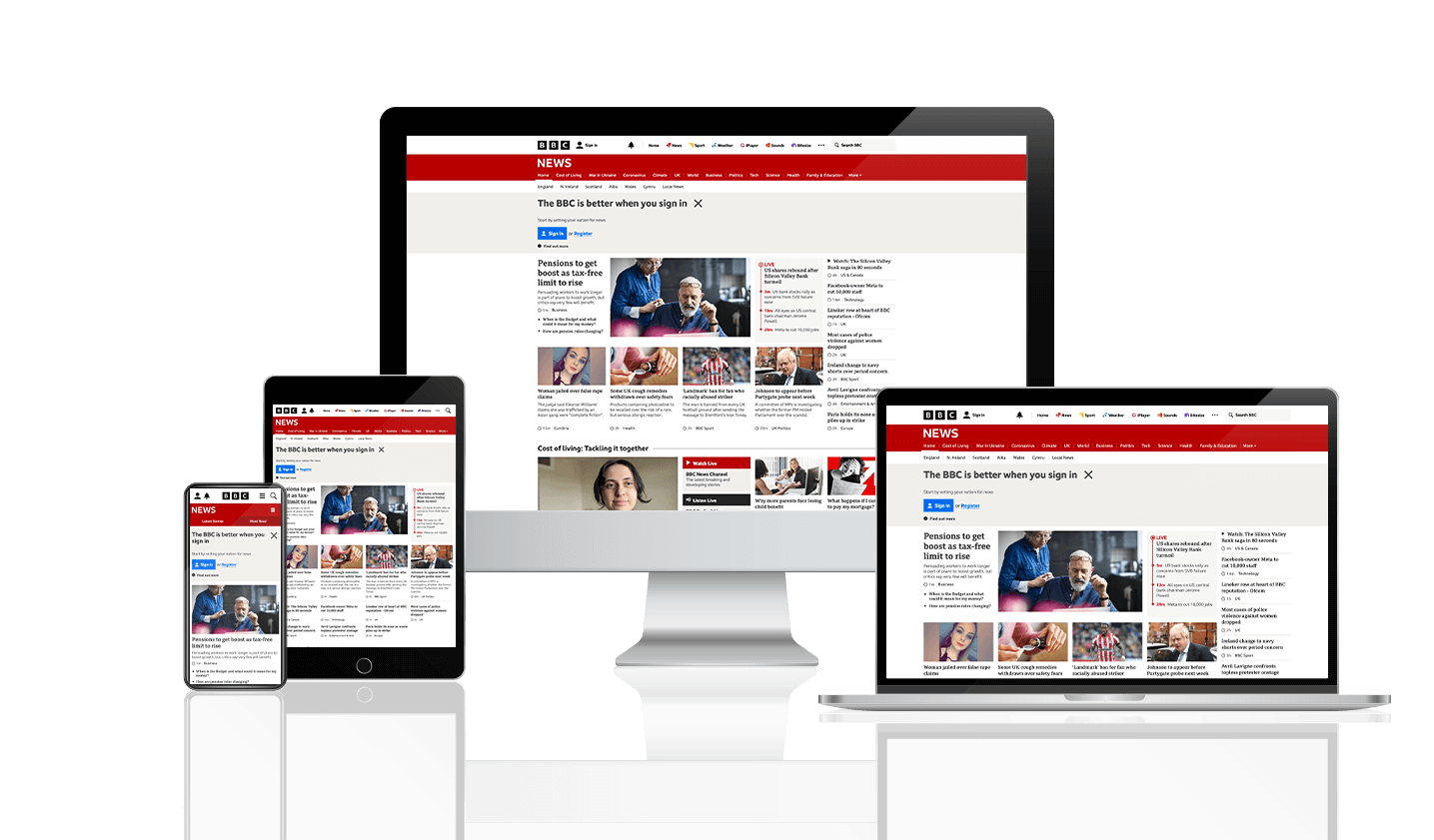Discovering the Latest Trends in stnews.live Coverage
The Influence of Social Media Site on the Way We Take In News Online
Social media site has actually fundamentally transformed news intake. It provides immediate accessibility to information, frequently overshadowing standard media electrical outlets. This quick circulation comes with challenges. Users deal with the threat of encountering misinformation and ending up being caught in resemble chambers. The algorithms driving tailored content can obscure varied point of views. As these dynamics develop, recognizing their ramifications comes to be vital for informed interaction in public discourse. What strategies might assist navigate this complex landscape?
The Advancement of News Usage in the Digital Age
As technology advanced, the method individuals consumed news changed substantially in the electronic age (stnews.live). Typical papers and relayed media started to decrease as the internet became a main source of information. On the internet platforms offered instantaneous accessibility to newspaper article, video clips, and podcasts, enabling users to remain informed any time. The ease of smart phones further increased this shift, making it possible for individuals to obtain updates on the go
In addition, the rise of news aggregators and web sites helped with the usage of diverse point of views, encouraging customers to customize their news consumption based on personal passions. This development additionally triggered wire service to adjust their approaches, concentrating on electronic web content and appealing visitors via multimedia layouts. Therefore, the typical barriers of time and space in news distribution diminished, resulting in a more immediate and tailored news experience for audiences worldwide.
The Function of Social Network Platforms in News Distribution
Social media site platforms have changed news distribution by offering instantaneous accessibility to details. Their algorithm-driven content curation typically prioritizes interaction over accuracy, leading to significant reliability challenges (stnews.live). As users navigate this landscape, the implications for news intake and public discourse ended up being progressively complex
Instantaneous News Access
Conventional news electrical outlets have actually long been the key resource of details, the increase of social media platforms has dramatically transformed how news is accessed and taken in. Instantaneous news accessibility has actually become a characteristic of the electronic age, enabling individuals to receive updates in real time. Platforms such as Twitter, Facebook, and Instagram permit news to spread swiftly, typically going beyond conventional media in speed and reach. Customers can share stories, remark on events, and involve with journalists, developing a dynamic interaction in between the target market and news content. This immediacy promotes a society of necessity, triggering users to inquire rapidly. As a result, the expectation for prompt news has improved journalistic techniques, engaging news organizations to adjust their methods to fulfill the demands of a fast-paced electronic setting.
Algorithm-Driven Material
While individuals proactively engage with material on social networks, the algorithms that regulate these systems play an essential function in determining which newspaper article acquire visibility. These formulas evaluate user habits, choices, and involvement metrics to curate personalized news feeds. As a result, specific stories might be intensified while others remain obscure, typically focusing on sensational or trending topics over substantive reporting. This careful direct exposure shapes users' understandings of present occasions and influences public discourse. The reliance on algorithm-driven web content can create echo chambers, where users are mostly revealed to viewpoints that align with their own beliefs. The dynamics of news distribution on social media systems considerably impact how individuals eat and interpret details in the digital age.
Integrity Challenges
As users progressively transform to social media sites for news, the credibility of info encountered on these systems comes to be a pressing problem. The decentralized nature of social networks permits anybody to publish web content, frequently obscuring the lines between trusted journalism and misinformation. Formulas prioritize interaction over precision, causing the prevalent circulation of marvelous or misleading stories. This atmosphere poses considerable obstacles for customers trying to recognize reliable sources. Social media site systems, while seeking to combat misinformation via fact-checking and web content moderation, face criticism for incongruities and predispositions in their methods. Inevitably, the responsibility exists with individuals to seriously assess the news they consume, as the fast spread of info usually outmatches verification efforts by platforms.
The Rise of Resident Journalism and User-Generated Web Content
The increase of citizen journalism has empowered day-to-day individuals to share news and viewpoints, often providing insights that traditional media might forget. However, this change additionally offers significant challenges, specifically the spread of false information that can emerge from unproven content. As user-generated content becomes more common, the equilibrium between authentic voices and precision in coverage stays a vital problem.
Empowering Day-to-day Voices

Challenges of Misinformation
While the rise of person journalism has opened methods for diverse voices in the media landscape, it has likewise presented considerable obstacles connected to misinformation. The convenience of sharing info via social media sites systems permits people to share news quickly, but this quick spread frequently comes at the price of precision. User-generated material often lacks the extensive fact-checking and editorial oversight that conventional journalism offers. Sensationalized or false stories can get traction, misinforming audiences and forming public understanding. Moreover, the blending of opinion and Source fact within social networks complicates the difference between qualified details and misinformation. Therefore, customers have to browse a significantly complicated media setting, calling for vital believing abilities to determine trusted news resources in the middle of the noise

False information and Its Ramifications for Public Discussion
As social media sites systems increasingly control the landscape of information dissemination, the spreading of misinformation presents significant obstacles for public discussion. Misinformation, typically developed to mislead or provoke emotional actions, can distort perceptions of truth and undermine trust fund in credible resources. This sensation causes polarized viewpoints, as individuals are attracted in the direction of echo websites chambers that strengthen their beliefs, additionally entrenching divisions within culture.
The implications for public discourse are extensive. When residents depend on false details, meaningful dialogue reduces, and the autonomous process endures. False information can incite worry and confusion, affecting public wellness, safety, and political security. Because of this, promoting media literacy becomes important, encouraging people to seriously evaluate details and discern reality from fiction. Dealing with the difficulties presented by false information is essential for preserving the integrity of public discourse and making sure a knowledgeable people qualified of taking part in positive discussions.
The Influence of Algorithms on News Visibility
Given the main duty of algorithms in identifying content exposure, their influence on news intake is extensive. These algorithms, utilized by social media platforms, focus on particular kinds of web content based on individual involvement and choices. Because of this, news write-ups that align with popular patterns or target market passions are most likely to be displayed prominently, while much less astonishing tales may be overlooked. This produces a setting where individuals are exposed mostly to information that enhances their perspectives, possibly resulting in echo chambers.
The constant advancement of algorithms indicates that news companies should adjust their techniques to straighten with these altering criteria, usually prioritizing clickbait or psychologically charged headings. Consequently, the stability of news coverage can be jeopardized, as important stories may not obtain the visibility they are entitled to. The algorithmic shaping of news exposure as a result plays an important duty in affecting public perception and understanding of current events.
The Shift Toward Aesthetic Storytelling in News Media
Increasingly, news media is welcoming visual storytelling as a powerful tool to engage target markets. This strategy leverages images, videos, infographics, and interactive components to share information much more properly than typical text-based layouts. As focus covers shorten, visuals offer a quick, impactful method to connect complex stories and get hold of visitors' passion.
Systems like here are the findings Instagram and TikTok have more accelerated this trend, compelling news organizations to adjust their content techniques to fit these visually-driven atmospheres. By including compelling visuals, news outlets can improve psychological connections and foster greater understanding of topical concerns.
Aesthetic storytelling allows for even more varied narratives, showcasing numerous viewpoints with vibrant discussions. As audiences significantly eat news with mobile devices, the change toward visuals not just provides to user preferences yet additionally assists to break down barriers to details gain access to. Eventually, this evolution mirrors a more comprehensive improvement in exactly how news is generated and eaten in the digital age.
Future Fads: Navigating the Transforming Landscape of News Consumption
While the electronic landscape remains to develop, news intake is poised for significant makeover driven by emerging modern technologies and altering audience actions. As man-made intelligence and equipment discovering breakthrough, personalized news feeds will end up being a lot more widespread, permitting customers to get content customized to their rate of interests. This customization can result in better engagement yet likewise increase worries regarding resemble chambers and false information.
The rise of voice-activated gadgets and wise audio speakers will certainly affect how news is delivered, moving the emphasis from visual to auditory styles. This fad may motivate wire service to take on even more succinct and engaging audio material.

Often Asked Concerns
How Do Social Media Interactions Affect News Credibility?
Social media communications can significantly influence understandings of news trustworthiness. Interaction metrics, such as likes and shares, often form audience count on, with preferred blog posts obtaining regarded legitimacy, despite the precision or dependability of the info presented.
What Duty Do Influencers Play in Shaping News Narratives?
Influencers considerably form news narratives by leveraging their platforms to amplify specific stories, usually customizing material to their audience. This can result in biased perspectives, affecting public perception and prioritizing sensationalism over accurate reporting.
Exactly How Can Users Identify Reliable News Resources on Social Media Site?
Individuals can identify reliable news sources on social media sites by checking the source's credibility, verifying realities with multiple outlets, evaluating the expertise of the web content, and recognizing possible biases in reporting to ensure exact information.
What Effect Does Social Media Carry Standard Journalism Jobs?
Social media considerably influences traditional journalism tasks by modifying income models, minimizing need for print media, and cultivating competition from resident reporters. Several professionals deal with task insecurity and need to adapt to rapidly transforming media landscapes.
How Do Various Demographics Consume News on Social Media Site?
Various demographics exhibit varied preferences for news consumption on social networks. More youthful target markets favor systems like TikTok and Instagram for fast updates, while older people often tend to favor Facebook and Twitter for more extensive discussions and short articles.